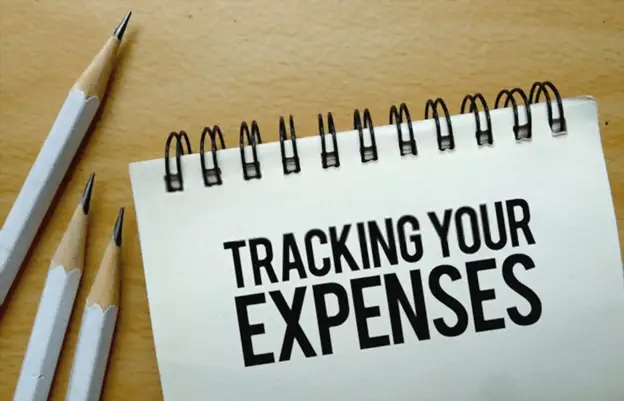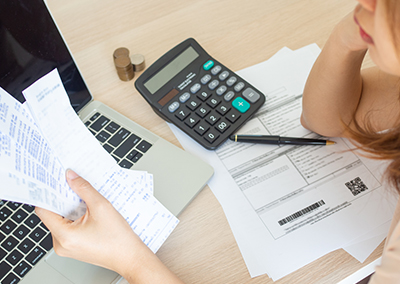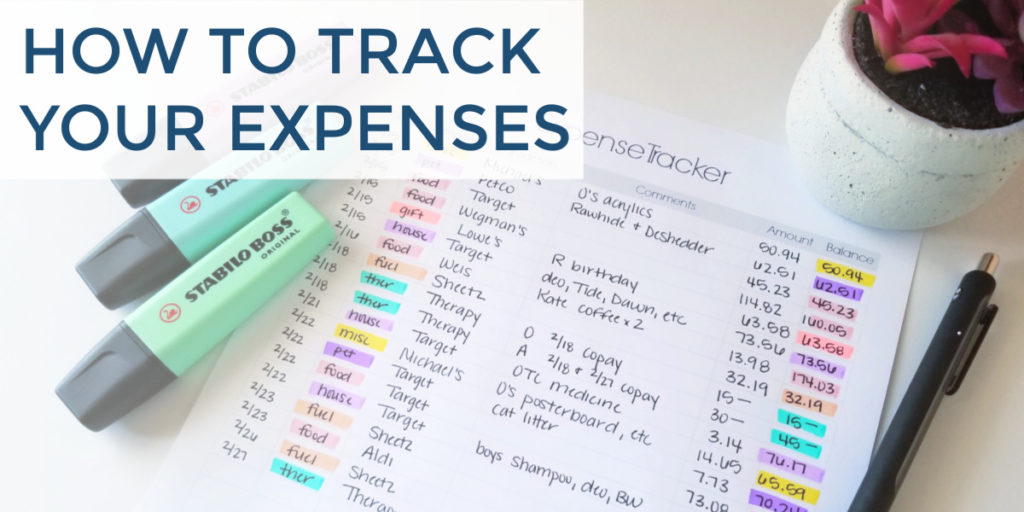Stop wondering where your money goes! Take charge of your finances, and track your spending. Managing your finances is a crucial aspect of adulting. It’s like navigating through a maze where every penny counts. This simple practice will help you to make informed spending decisions, build a budget that works, and finally reach your financial goals. Tracking your Expenses is important because it helps you control your money, make budgets, and achieve your savings goals. You can track expenses by writing them down, using spreadsheets on the computer, or using apps on your phone.
Getting Started is Easy!
1. Know Your Income

List out all the money you plan on making this month. List all your income sources like salary, side hustles, rental income, etc. This gives you a clear picture of the money coming in. Understanding your income is like knowing the score in a game. It tells you how well you’re doing and what moves you can make. Imagine you’re playing basketball without keeping track of the score. You wouldn’t know if you’re winning or losing, right? Knowing your income is just like that – it gives you a clear picture of where you stand financially.
So, let’s dive into it. Income isn’t just the money you get from your job. It’s like a puzzle with many pieces. Your salary is one piece of the puzzle, but there are others too. For example, if you have a side hustle like selling homemade crafts or tutoring that’s part of your income puzzle. Rental income from a property you own? That’s another piece. Even things like bonuses, gifts, or refunds can be part of your income.
Knowing all your income sources helps you see the bigger picture. It’s like putting together a puzzle, each piece adds to the whole picture. When you list out all your income sources, you’re not just looking at the big paycheck from your job. You’re also seeing the smaller streams of income that flow into your bank account.
Why is this important? Well, think of it like planning a road trip. Before you hit the road, you need to know how much gas you have in the tank. Listing out your income is like checking your fuel gauge – it tells you how far you can go.
But it’s not just about knowing how much money is coming in. It’s also about understanding where it’s coming from. Each income source might have its own rhythm – some are steady and reliable, like your salary, while others might fluctuate, like income from a side hustle. By knowing your income sources, you can better anticipate any changes or fluctuations.
Let’s say you have a side hustle selling handmade jewelry. Some months, business might boom, and you rake in extra cash. In other months, sales might slow down. By listing out all your income sources, you’re prepared for those ups and downs. It’s like having a safety net to catch you if things don’t go as planned.
Understanding your income isn’t just about the numbers – it’s about having peace of mind. When you know how much money you’re bringing in and where it’s coming from, you feel more in control of your finances. It’s like being the captain of your own ship, steering confidently through the waves.
So, how do you start? Grab a pen and paper, or open up a spreadsheet on your computer. List out all your income sources, big and small. Don’t forget to include any irregular sources of income. Once you have everything listed out, take a moment to admire your work. You’ve just taken a big step towards financial awareness and empowerment.
But we’re not done yet. Knowing your income is just the first step. Next, you’ll want to compare it to your expenses to see how they stack up. Are you spending more than you’re making? Or are you living within your means? Understanding the relationship between your income and expenses is key to building a solid financial foundation. knowing your income is like having a compass for your finances. It guides you in the right direction and helps you navigate life’s twists and turns. So, take the time to list out all your income sources, and gain a deeper understanding of your financial landscape. Your future self will thank you for it.
2. Categorize Your Spending
Divide your expenses into categories like housing, groceries, transportation, utilities, entertainment, debt payments, etc. so it will be easy to track your spending.
- Housing: This is the money you spend on where you live, like rent or mortgage, utilities (like electricity and water), and home repairs.
- Food: Money spent on groceries from the store or eating out at restaurants.
- Transportation: This includes anything related to getting around, like gas for your car, public transportation fares, or money spent on taxis or rideshares.
- Bills: These are regular payments you make for things like electricity, water, internet, and phone services.
- Entertainment: Money spent on things like going to the movies, and concerts, buying books or video games, or going out with friends for fun activities.
These are just some common categories, but there can be others depending on your lifestyle and priorities.
Consistency is key – use the same categories every time you track.
3. Create a Budget That Works For You To Track Your Spending

A.Set Realistic Budget Goals
This means deciding how much money you want to save and what things you want to spend your money on. Think about what’s most important to you, like paying bills on time or having some fun money for entertainment.
B. How Much Can You Save?
Figure out how much money you can put aside after paying for all your expenses. This can help you reach your savings goals faster.
C. What are Your Spending Priorities?
Decide what’s most important to you when it comes to spending money. Maybe you really want to save up for a vacation, so you’re willing to cut back on eating out or buying new clothes.
D. Stick to Your Budget
Once you’ve made a budget, it’s important to stick to it. This means keeping track of how much you spend and making sure you don’t spend more than you planned. Find a way to track your expenses that works for you, like using a notebook, a spreadsheet on your computer, or a budgeting app on your phone.
4. Choose Your Tracking Method

1. Pen and Paper
A classic, low-tech option for those who prefer a hands-on approach. Use a notebook to record expenses daily or weekly.
2. Spreadsheets
Offer more flexibility and organization. Utilize free tools like Microsoft Excel or Google Sheets to categorize and analyze your spending.
3. Download Expense Tracking Apps
Using expense-tracking apps can be really helpful. These are like little programs you can download on your phone. They’re easy to use and lots of people like them. With these apps, you can connect them to your bank accounts, so they can keep track of your spending for you. They even sort your spending into categories, so you can see where your money is going. Plus, they often show your spending in neat pictures and charts, so you can understand it better. A convenient and popular choice. Become a Pro in tracking your expenses!
4. Record Everything, Big or Small
Every coffee, grocery purchase, and clothing bill counts. Check your bank and credit card statements and keep all the receipts.
5. Be Timely
Track your expenses daily or weekly to avoid forgetting details. Set aside a few minutes each day or designate a specific day of the week to update your spending records. By staying on top of your expenses, you’ll gain a clearer picture of your financial habits and be better equipped to manage your money.
6. Embrace Receipts
Use a designated envelope or folder to keep physical receipts for reference. Whether it’s a paper receipt from a store or an email receipt from an online purchase, keeping track of your receipts can help you reconcile your expenses and identify any discrepancies. It’s also a good practice for budgeting and tax purposes.
7. Leverage Technology
If using apps, take advantage of bank syncing and automatic categorization to save time and track your spending easily. Many budgeting apps offer features like bank syncing, which automatically imports your transactions, and automatic categorization, which assigns categories to your expenses based on predefined rules. By leveraging technology, you can streamline the process of tracking your expenses and gain a real-time view of your financial situation.
8. Review Regularly
Schedule time weekly or monthly to analyze your tracked expenses. Look for trends and patterns in your spending behavior. Are there areas where you can cut back or make smarter choices? By conducting a thorough spending analysis, you’ll gain valuable insights into your financial habits and identify areas for improvement.
9. Identify Spending Patterns
See where your money goes. Are there unexpected leaks? Analyzing your spending patterns can help you identify areas where you may be overspending or wasting money. Look for recurring expenses that you can reduce or eliminate, such as subscription services you no longer use or dining out too frequently. By identifying spending patterns, you can make adjustments to your budget and allocate your money more effectively.
10. Visualize Your Data
Many apps offer charts and graphs. Visualizing your financial data can make it easier to understand and interpret. Look for budgeting apps that offer customizable reports and interactive dashboards, allowing you to visualize your income, expenses, and savings goals in a clear and concise manner. By visualizing your data, you can gain valuable insights into your financial habits and make informed decisions about your money.
Based On Your Spending Analysis, it’s time to create a plan
1. Set Smart Goals
- Specific: Define exactly what you want to achieve. For example, instead of saying “I want to save money,” specify “I want to save $5,000 for a down payment on a house.”
- Measurable: Make sure your goal is quantifiable so you can track your progress. In our example, you can measure your progress by tracking how much money you save each month towards the $5,000 goal.
- Achievable: Ensure that your goal is realistic and attainable given your current financial situation. Consider factors like your income, expenses, and any other financial obligations.
- Relevant: Your goal should align with your overall financial objectives and priorities. Ask yourself why this goal is important to you and how it fits into your long-term plans.
- Time-bound: Set a deadline for achieving your goal. This adds urgency and helps you stay focused. In our example, you might set a deadline of one year to save $5,000 for the down payment.
2. Budget for Your Priorities
- Essential Expenses: Start by identifying your fixed expenses such as rent or mortgage payments, utilities, groceries, transportation, and insurance. Allocate a portion of your income to cover these necessities.
- Savings Goals: Determine how much you want to save each month towards your various financial goals, such as an emergency fund, retirement, or a specific purchase. Treat savings as a non-negotiable expense and prioritize it in your budget.
- Flexible Spending: After covering your essential expenses and savings goals, allocate the remaining funds for discretionary spending on non-essential items like dining out, entertainment, or travel. Be mindful of your spending in these categories and adjust as needed to stay within your overall budget.
3. Cut Back Strategically
- Identify Areas for Reduction: Review your spending habits and identify areas where you can cut back without significantly impacting your lifestyle. This could include dining out less frequently, finding cheaper alternatives for certain expenses, or negotiating better deals on utilities or subscriptions.
- Track Your Expenses: Keep track of every penny you spend to gain insight into your spending habits. Use apps or spreadsheets to categorize your expenses and identify areas where you can make cuts.
- Make Informed Adjustments: Regularly review your spending and make informed adjustments based on your financial goals and priorities. Be flexible and willing to make changes as needed to stay on track toward achieving financial freedom. Remember that it’s not about deprivation but rather about making conscious choices that align with your values and goals.
Conclusion
Tracking your spending is not just about recording numbers; it’s about gaining control over your financial future. Whether you prefer old-school methods like pen and paper or embrace the latest technology with budgeting apps, the key is consistency. By making tracking your spending a regular habit and analyzing your financial data, you’ll be empowered to make smarter financial decisions and achieve your long-term financial goals.
Tracking your expenses is like having a map of your money. It helps you see where your cash is going and where it’s coming from. Imagine you have a friend who loves to borrow money but never pays you back. With tracking your expenses, you’ll spot that friend a mile away! Plus, when you know where your money is going, you can make smarter choices about how to spend it. It’s like having a superpower for your wallet.
Now, you might be thinking, “But tracking my expenses sounds like a hassle.” Sure, it might take a little effort at first, but think of it like this: You wouldn’t drive blindfolded, right? Tracking your expenses is like taking off that blindfold and steering your finances in the right direction.
So, how do you start? Well, it’s as easy as pie. Start by jotting down everything you spend money on, from your morning coffee to your monthly bills. You can use a simple notebook or one of the many apps available on your phone. Then, at the end of each week or month, take a look at your spending. You might be surprised at what you find!
Now, let’s talk about benefits. By tracking your expenses, you’ll be more aware of your spending habits. This awareness alone can help you cut back on unnecessary purchases and save money for things that truly matter to you. It’s like shining a light on your spending habits and saying, “Hey, do I really need that?”
But wait, there’s more! When you track your expenses, you’ll also be better prepared for unexpected expenses that life likes to throw your way. Remember that friend who never pays you back? With expense tracking, you’ll have the cash to cover those unexpected moments without breaking a sweat.
So, what are you waiting for? Take the plunge and start tracking your expenses today. Your future self will thank you for it!
Now, if you’re hungry for more tips on managing your money like a pro, check out these articles on budgeting, tracking your spending, spending analysis, and income and financial goals. They’re packed with practical advice to help you take control of your finances and achieve your goals. What are you waiting for? Start tracking your spending today and take control of your financial destiny!

